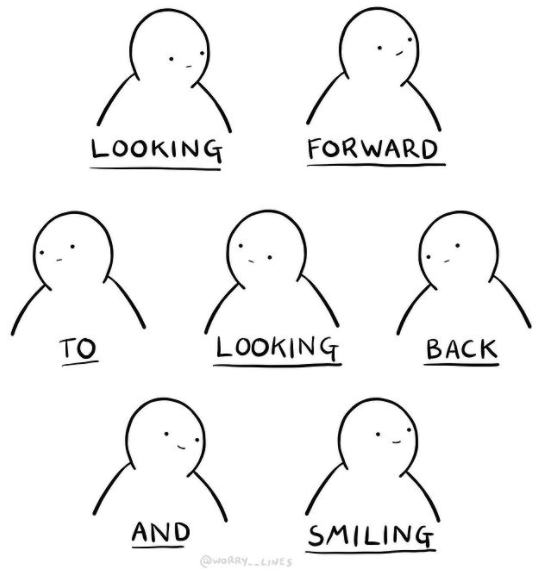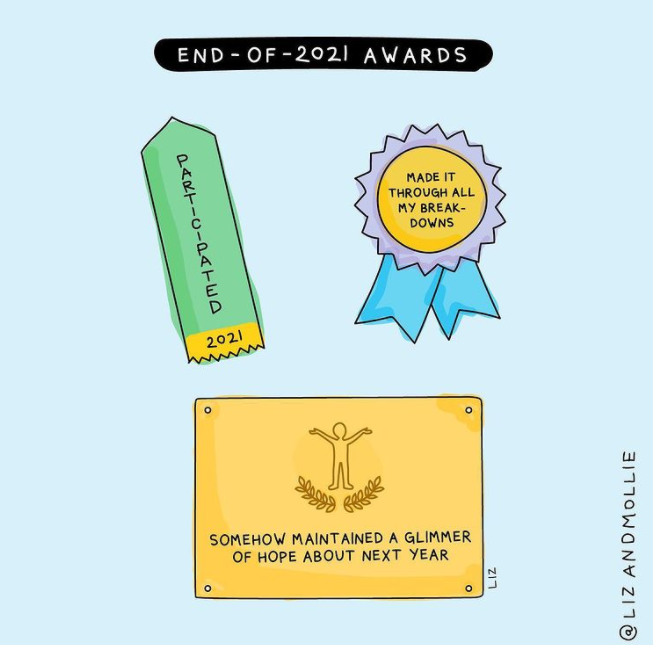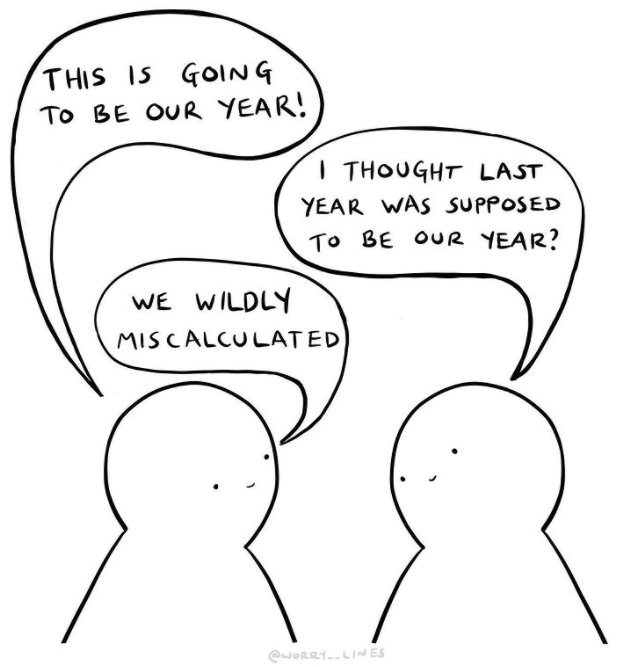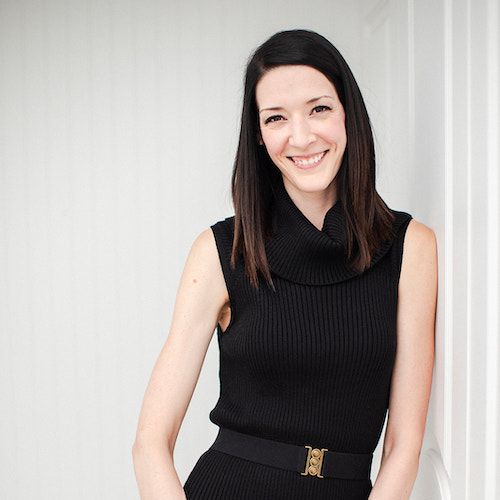Set Direction with Goals, Make Progress with Systems
Learn why systems-oriented goals are an effective way to make progress on your goals and how to set them.

I had a hell of a time writing this annual goal-setting article.
I wrote and deleted thousands and thousands of words over at least 8 hours of effort as I fought to come up with something useful. I imagine this struggle was a symptom of writing in the last week leading into the holidays (which is always a bit of a slog for me). My goal was to finish the article before I took my break, and have it ready to be published in early January.
After days of wrestling with the words, I took a step back and realized...I just needed to keep working my usual systems.
Systems over outcomes
The premise of this article, and the inspiration for it, is:
“You do not rise to the level of your goals. You fall to the level of your systems.”
- James Clear, Atomic Habits
I love this. As someone who is incredibly process-oriented, this resonates with me. In the past, I have struggled with more outcome-oriented goal-setting practices like the traditional SMART (Specific, Measurable, Actionable, Results-Based, and Time-Bound) goals. They have often felt nebulous and never truly motivated me.
As I reflected on the goals that I reached over the last year, I realized that most were grounded in regular, consistent practice (a system!), rather than attaining a specific outcome.
Example of a system-oriented goal
When I decided to shift to consulting full-time, my initial goals were to start building my client base and work on increasing my catalogue of articles to become a thought leader in my field. I knew the types of things I wanted to happen to indicate I was moving in the right direction, but neither goal had a true endpoint.
The literature of more traditional goal-setting tells me that a goal without an endpoint is not a very good goal! These clearly didn’t fit within the framework of a SMART goal either.
I could have said I want to have x number of clients or x number of speaking engagements, by x date, but the more I thought about it, the more it felt like I was making up completely arbitrary numbers with no true meaning to me.
Instead, I decided that simply making daily progress on each of them through my writing and other regular activities was enough. Sure enough, through my consistent practise and systems, I started to land new consulting clients, build a backlog of articles, and book multiple speaking gigs.

The benefits of system-oriented goals
As I was thinking about annual goal setting and looking at other approaches, I returned to James Clear’s article, Forget About Setting Goals, Do This Instead. I had flagged it a while back and, of course, it’s in line with the quote above. It outlines 4 problems with outcome-focused goal-setting over system-focused goal-setting:
- Winners and losers have the same goals.
- Achieving a goal is only a momentary change.
- Goals restrict your happiness.
- Goals are at odds with long-term progress.
While I don’t think that there is no place at all for outcome-based goals, the benefits of system-based goals made a lot of sense to me:
1. The better the system, the more likely you are to achieve your goals
Clear posits that “if successful and unsuccessful people share the same goals, then the goal cannot be what differentiates the winners from the losers.”
So what does differentiate them? It’s reasonable to think that the people who were successful had better systems in place to support regular, continuous improvement to move them towards their goals, over those who were unsuccessful.
2. Change that sticks
As Clear put it, “when you solve problems at the results level, you only solve them temporarily. In order to improve for good, you need to solve problems at the systems level. Fix the inputs and the outputs will fix themselves.” You don’t just address the symptom, but the cause.
Part of why the changes are more likely to stick is the system-oriented goals allow for uncertainty and encourage change. A result is not just achieved and then considered done (with the likelihood of slipping back). Instead, iteration and continual improvement mean that the outcome is not singular but ongoing and easier to stick to.
3. Ongoing satisfaction
An outcome focus frames a goal as binary, pass or fail. Either you did it, or you didn’t. This restricts the opportunity for satisfaction or happiness and even results in disappointment. Clear suggests “the problem with a goals-first mentality is that you’re continually putting happiness off until the next milestone.”
When you instead focus on your system and make small, incremental progress, you remove the pressure of the outcome. You take satisfaction in the process itself and experience happiness with the progress you make, versus being tied to the end result.
The idea is really just a variation of enjoying the journey over the destination.
4. Long-term progress
What happens once you reach your goal? One of the challenges of an outcome-oriented goal is that once you reach it, it’s over, and suddenly progress stops.
Clear gives the example of running a race: “Many runners work hard for months, but as soon as they cross the finish line, they stop training. The race is no longer there to motivate them. When all of your hard work is focused on a particular goal, what is left to push you forward after you achieve it?”
With a systems focussed approach, you are more likely to keep moving forward because there is a continuous cycle of improvement versus a single accomplishment.
I know I have found this in keeping my daily fitness streak going (1473 as of publishing!).

How to set system-oriented goals
As you think about your annual goal setting and what you want to achieve in the year ahead, consider the following steps to establish system-oriented goals:
1. Start with reflection
The foundation of annual goal-setting starts with doing an annual reflection. Looking back is how you see the patterns of the past year, evaluate what went well, what didn’t, and why. It’s how you identify the major learnings from the year and from those learnings you form the basis of your annual goals.
As I outline in the annual reflection article, identify:
- Common threads or themes.
- What you want to keep doing.
- What you want to change or stop doing.
- What you want to start doing.
- Who you want to spend more time with.
- Who you want to spend less time with.
In addition, think about:
- Who do you want to be a year from now?
- What kind of person do you want to be?
- What words do you want to be able to confidently use to describe yourself?
- What projects do you want to be finished?
For example, a few of my learnings from my reflection were:
- I want to keep my daily fitness streak.
- I want to keep my daily writing streak.
- I want to start doing more activities with my friends and family. I noticed that my hermit introverted habits are dialled way up and I need to start turning them back down!

2. Set the direction
Based on the things you identify from your reflection, write down some outcomes you want to achieve. Yes, you have to start with an outcome, you just can’t stop there! It’s the north star.
For example, based on my learnings my outcomes might be:
- Do some kind of fitness every day.
- Publish an article every week.
- Plan dinners with friends for at least two evenings every month.
3. Break it down into a system
Once you know what you want to work towards, start to break it down. What is the smallest thing you can do to start to make progress? You don’t need to have every step figured out, just the very first one. Once you have the first step, you can decide the second step, and then the third, and so on.
“There is only one way to eat an elephant, a bite at a time.” - Desmond Tutu
For example, based on my outcomes above:
1. Do some kind of fitness every day.
Step 1: Book 45 minutes of fitness time in my calendar every day.
2. Publish an article every week.
Step 1: Book at least 1 hour of focussed writing time in my calendar every day.
3. Plan dinners with friends for at least two evenings every month.
Step 1: Make a list of the friends to invite for dinners.
Step 2: Book a reminder in my calendar in the first week of each month to reach out to my friends.
Step 3: Send an email or text with dates and an invite.
4. Plan your systems based on the assumption of hardship.
It’s easy to set goals and make a plan when you are energized and feeling good. But what happens when things are hard? Don’t plan your systems based on the idea that you will be eager and motivated. Plan your systems as though you will have to implement them when you are tired or things are hard.
You do this by being clear on the time, energy, and effort that will be required to achieve your goals. Think about the potential blockers and what you are going to do about them.
For example, for my fitness streak: on the days that my body is sore or I am really tired and don’t feel like running or doing strength training, I still do at least half an hour of yoga as my fall back. I have already made the decision for what I will do when I really don’t want to work out.

5. Be consistent
What are the things you can do every day to work towards your goal? Setting up daily, small, incremental habits is a way to keep moving forward on something and ensures constant, regular progress, which by itself is motivating.
I book my daily fitness and writing practices in my calendar and protect that time which means that regardless of what’s going on or how I am feeling, I am always making progress and improving.
6. Iterate, iterate, iterate
It’s easier to focus on being better at something, than being good at something. It’s a subtle mind shift that relieves some of the pressure that comes with learning or trying something new.
Constant learning paired with deliberate action propels you forward. The motivation is in movement, regular evaluation, and subtle shifts.
For example, my fitness streak started with yoga. I got stronger and experimented with different types of workouts. Over time, I added outdoor running, strength training, HIIT, and pilates. This year I even added winter outdoor running (instead of ending my running season when it snowed) which is not something I thought I would ever do. It was a breakthrough!
Similarly, in the last 6 months since I started my daily writing practice and publishing weekly I have adjusted and changed my writing. I established my writing ritual and figured out what I like to write, how I like to write, and the things that resonate with my readers.

Effective systems become habits
When you establish a system that works for you and keep working on it consistently, it becomes a habit. Habits are powerful because they become assumptions. Habits become part of your day, which means progress is ensured.
For example, there is no thought of IF I am going to sit down and write each morning for my daily writing practice. It is assumed, rather it’s WHAT am I going to write. Same thing with my daily fitness.
As you think about your goals for 2022, go beyond the outcomes and get clear on your system. What is the smallest first step you can take, every day, to move forward?
Start today!
Do you need help setting your direction and figuring out your systems? I would love to help!
Share
Ashley Janssen

Productivity consultant, writer, speaker, serial entrepreneur, chaos calmer, introvert, cat-lady. Lover of books, fitness, old fashioned’s, basketball, and video games.
Follow me on
Twitter
or
LinkedIn.
Hire me for
1 on 1 productivity consulting
or
speaking.
Related articles

Goals, Video Games, And The Quest Mentality

Why Traditional Goal Setting Doesn't Always Work and What To Do Instead


Comments ()